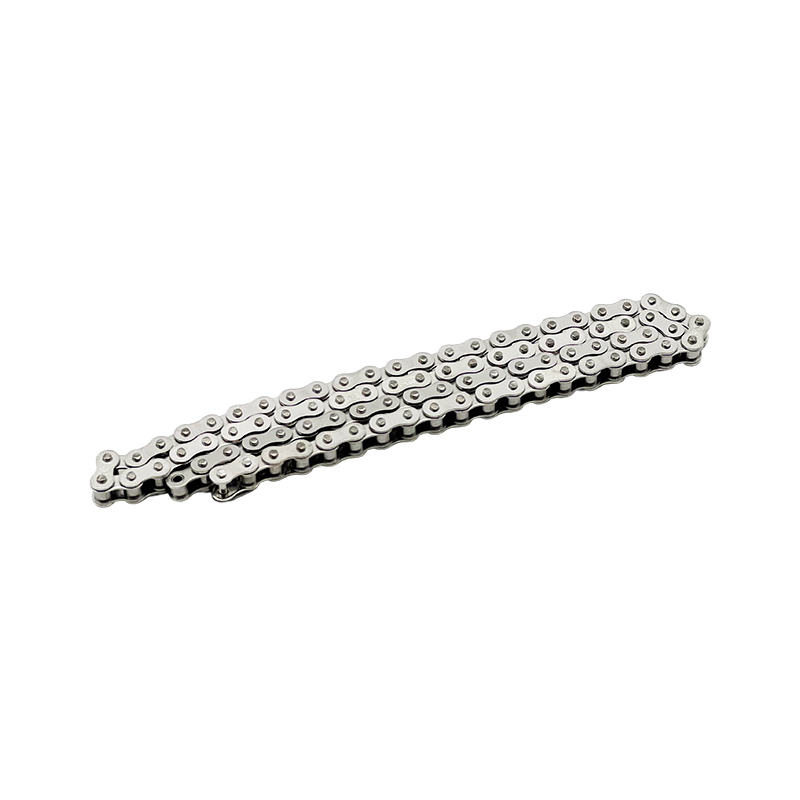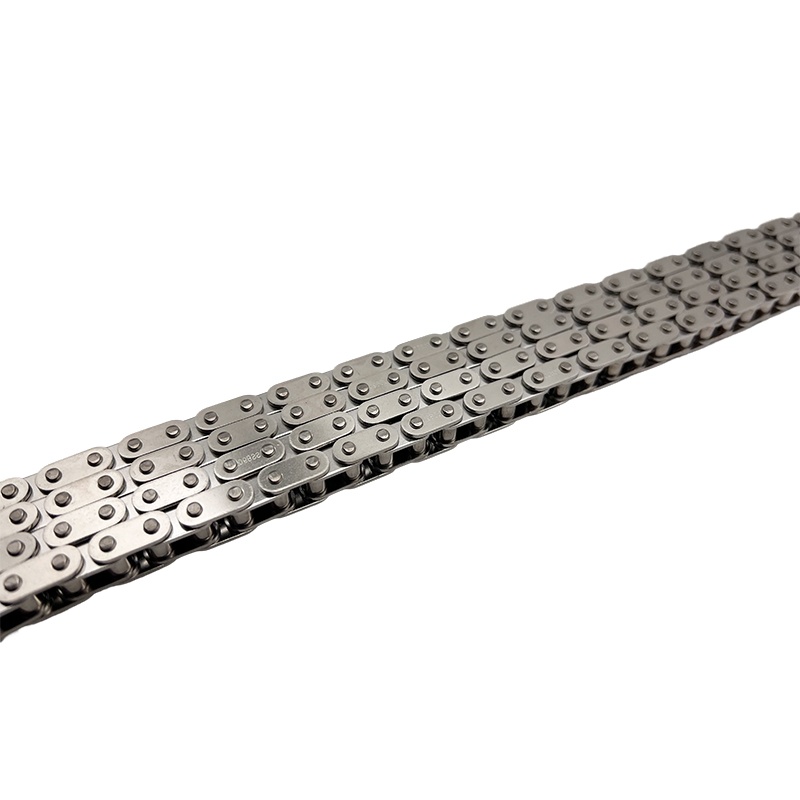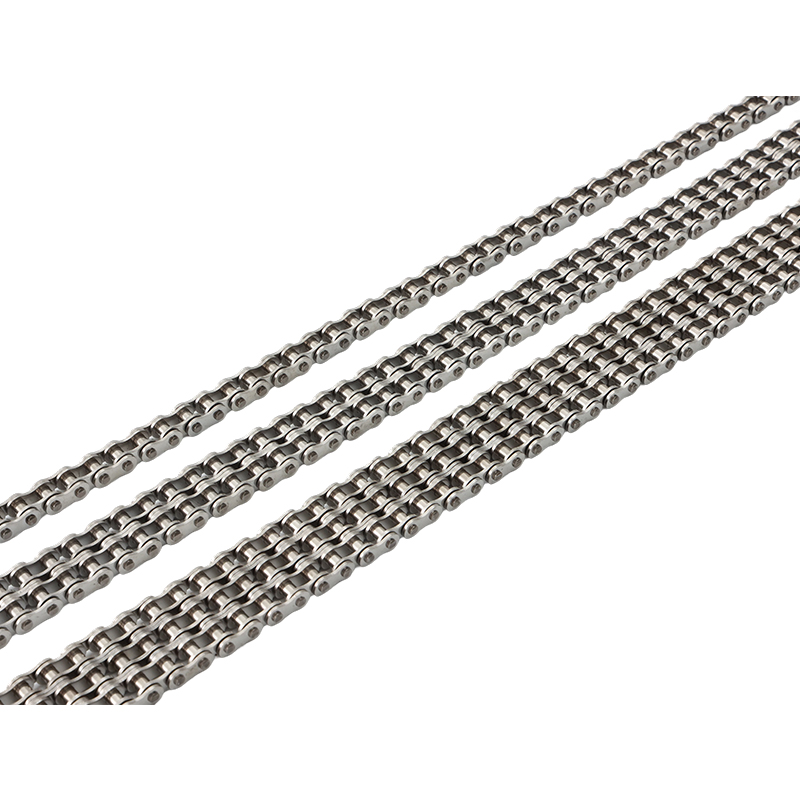How to avoid intergranular corrosion during the welding process of stainless steel 304 transmission chain?
Release Time : 2025-11-11
Intergranular corrosion during the welding process of 304 stainless steel transmission chains significantly reduces their corrosion resistance and mechanical properties, thereby affecting the reliability and service life of the transmission system. The essence of intergranular corrosion is the depletion of chromium in the grain boundary regions caused by the welding thermal cycle, forming low-chromium corrosion channels. This phenomenon is closely related to material composition, welding process, and heat treatment methods. To avoid such problems, comprehensive measures are needed in material selection, process optimization, heat input control, and post-treatment.
Material selection is fundamental to preventing intergranular corrosion. When 304 stainless steel has a high carbon content, chromium carbide is easily precipitated at the grain boundaries during welding, leading to the formation of chromium-depleted zones. Therefore, prioritizing the use of ultra-low carbon stainless steel (such as 304L), with a carbon content below 0.03%, can significantly reduce chromium carbide precipitation, thereby reducing the risk of intergranular corrosion at its source. If standard 304 stainless steel must be used due to cost or supply constraints, its shortcomings must be compensated for through process adjustments. For example, stabilizing elements (such as titanium and niobium) can be added to the welding material. These elements preferentially combine with carbon to form stable compounds, protecting chromium from consumption and thus maintaining grain boundary corrosion resistance.
Optimizing welding process parameters is key to controlling heat input. During welding, the longer the heat-affected zone remains in the sensitization temperature range of 450–850°C, the more complete the precipitation of chromium carbide and the more significant the tendency for intergranular corrosion. Therefore, low heat input processes, such as pulsed TIG welding, should be adopted to reduce the high-temperature dwell time through short pulse heating; simultaneously, welding speed should be controlled to avoid localized overheating. For multi-layer welding, each weld layer should be cooled to below 600°C before proceeding to the next layer to prevent the accumulation of interlayer temperature leading to an expansion of the sensitized zone. Furthermore, the welding current should be reduced by 10%–20% compared to ordinary steel to reduce heat input. Using a vertical oscillating welding torch instead of a horizontal oscillation can further even out heat distribution and reduce the risk of localized overheating.
The choice of welding method directly affects the extent and quality of the heat-affected zone. TIG welding, due to its concentrated heat input and excellent weld formation, is the preferred method for welding stainless steel 304 transmission chains, especially suitable for thin plates or applications requiring high weld quality. For medium and thick plates, metal inert gas (MIG) welding is more efficient, but requires high-purity argon (99.99% or higher) or mixed gases (e.g., 98% argon + 2% oxygen) to prevent oxidation. While manual arc welding is flexible, it requires strict matching of the electrode type (e.g., E308L-16) and control of the interpass temperature to no more than 150°C to avoid carbide precipitation. Regardless of the method used, it is essential to ensure that the weld area is isolated from air to prevent oxide film damage and subsequent degradation of corrosion resistance.
Post-weld treatment is a crucial step in restoring the material's corrosion resistance. Solution treatment, which involves heating to 1050-1100℃ to dissolve chromium carbide followed by rapid cooling, effectively eliminates chromium-depleted areas. However, this method can cause deformation and should be applied cautiously based on the transmission chain structure. For parts that cannot undergo solution treatment, rapid cooling (such as water cooling) or pickling passivation can be used to chemically remove the oxide layer on the weld surface, regenerating a dense passivation film and improving corrosion resistance. Furthermore, the weld surface must be ground to a smooth finish to thoroughly remove weld slag and spatter, preventing the accumulation of corrosive media.
Environmental factors and operational details are equally important. Before welding, a special stainless steel wire brush must be used to thoroughly remove oil, oxides, and other impurities from the material surface to prevent these impurities from reacting during welding and exacerbating intergranular corrosion. During welding, the arc should be extinguished slowly, filling the crater to avoid flame cracking; the filler wire should be biased towards the arc and quickly withdrawn to prevent adhesion to the edge of the molten pool, which could lead to stress concentration. For special-shaped parts such as H-beams, the welding sequence must be adjusted according to specifications to avoid unilateral stress accumulation that could cause deformation and cracking.
Through comprehensive measures such as material upgrades, process optimization, precise control of heat input, and post-weld treatment, the risk of intergranular corrosion during the welding process of stainless steel 304 transmission chain can be significantly reduced, thereby improving its corrosion resistance and reliability.







